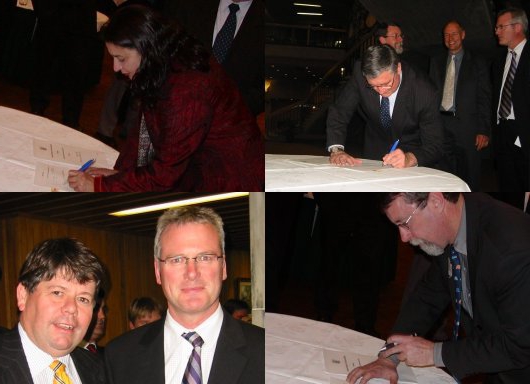The system of state and local self-government is designed to provide solutions to issues of territorial and federal significance. The powers of the relevant structures include the administration of a large volume of public affairs within the framework of the law and in the interests of the population. The system of state power and local government are in constant interaction. Both institutions in their activities are guided by the will of the citizens of the country. Let us further consider what constitutes a local government management system.
Classification
The types of local government systems are divided according to different criteria. In particular, the classification is carried out according to the degree of interaction between the central and territorial apparatus. Thus, the nature of the political system established in the country is of importance. Local government models may vary. The most common are:
- Classical (Anglo-Saxon).
- Mixed.
- Soviet.
- Continental.

Depending on the levels at which representative bodies are formed in the local government system, they distinguish:
- Three-level structure, in federations - two-level. Such a system of local government was characteristic at different times for different countries: Czechoslovakia, the USA, New Zealand, Albania, Greece, Canada, Belarus, Hungary, Ukraine, Poland, France, Spain, Germany, Italy, Yugoslavia, etc.
- A two-level structure, in federations - a single-level. Such a system of local governments is typical for small countries. Among them are Denmark, Portugal, Croatia, Estonia, Switzerland, Austria, Ireland and some others.
- Single level structure. It took place at different times in countries such as Lithuania, Estonia, Latvia, Finland, Bulgaria, Iceland and others.
Charter Type
In a number of countries, the Council is part of the local government system. Moreover, he may have preemptive powers. Chapter in executive body elected by the Council. In rare cases, it is appointed by the population. The executive structure, in turn, can be collegial. For different eras such a system authorities Local self-government was typical for Belgium, Poland, Czechoslovakia, Iceland, Serbia, Bulgaria, etc. In the structure, the head of the executive branch can be vested with the predominant powers. In this case, he is elected by the people. As a rule, the head of the executive structure is unique.
Correlation with the central apparatus
Classification in this case is as follows:
- There are no appointed representatives of the central office in the structure, and their functions, in turn, are performed by local authorities. Such a device was characteristic of Romania, Bulgaria, the USA, Hungary, Slovakia and other countries.
- There is a combination of appointed representatives of the central government with elected local authorities. This structure is characteristic of Italy, Great Britain, France, Austria, Norway, Belarus, Denmark, etc.
- Appointed representatives of the central office replace local authorities at the levels of large administrative units. Such a system exists in Finland, Iceland, Serbia and other countries.
Local government in the power system: theoretical aspect
This structure acts as one of the forms of realization of the will of the people. Municipal systems of local self-government are considered decentralized institutions.It is envisaged that these structures are endowed with relative independence. Local authorities have autonomy. In the first half of the 19th century, the theoretical foundations of the formation of the structure in question appeared. The author of these ideas was Alexis Tocqueville - French historian and statesman, Paul Laband, Lorenz Stein and others.

Social theory is based on the principles of recognition of the freedom to exercise their powers by territorial unions and communities. The modern Russian system of local self-government belongs to the category of public administrative institutions. It is not considered an offshoot of civil society. Along with this, there is a denial of the state-legal nature of local authorities.
The legislative framework
The system of local government in the Russian Federation acts as one of the foundations of the federal, constitutional system of the country. It is recognized and guaranteed by the Basic Law.
The legal basis of the system are:
- European Charter.
- Constitution of the Russian Federation.
- Charters of the Moscow Region.
- International treaties and universally recognized norms of world law.
- Constitutions or charters, laws and other legal acts of constituent entities of the Russian Federation.
- Federal Law No. 131, which regulates the general principles of the organization of the local government system, other laws and regulations adopted in accordance with the Federal Law, Decrees, the President, government decrees and other legal documents.
- Decisions made at the gatherings and referenda.
- Other legal documents published under the law.
Constitutional norms
According to the provisions of the Basic Law, the system of local self-government provides for the independent expression of the will of the population and the resolution of issues of territorial significance. In addition, the structure carries out the use, possession, disposal of the property of the municipality in the interests of citizens.

Local issues include tasks to directly ensure the normal functioning of the population of the Moscow Region. The 1993 Constitution enshrines the right of citizens to exercise their will directly, as well as through the appropriate structures of the central and territorial administrative apparatus. Thus, the Basic Law recognized the system of local self-government, which serves to solve pressing issues of municipal importance.
Federal Law No. 131
Federal law establishes which local governments are part of the administration system. Its standards determine the competence of structures and officials. At the same time, Federal Law No. 131 gives certain bodies the state powers of the Russian Federation and its constituent entities. For this, the Law provides them with appropriate subventions and establishes accountability to central structures.
The Federal Law defines the system of municipal authority as a recognized and guaranteed independent activity of the people in resolving issues of municipal importance directly or through authorized structures. Moreover, the law proceeds from the interests, historical and other traditions of the population. According to the Federal Law, the system of local self-government acts as a form of exercising democracy, which ensures, within the framework provided for in the Constitution, federal, subject and other normative acts, that citizens independently resolve various issues of territorial importance.
Forms of Implementation
According to the Constitution, local self-government is implemented by the population through direct expression of will, through elected and other authorized bodies. The direct forms of administration include:
- Municipal elections.
- Local referendum.
- Voting for recall of deputies.
- The gathering of citizens.
- Voting on the issues of transforming and changing the boundaries of the Moscow Region and so on.

The population may participate in the implementation of self-government. These forms include:
- Law-making initiative of the population.
- Territorial public administration.
- Meetings of citizens.
- Public hearings.
- Population Survey.
- Appeals of citizens to local authorities.
- Conference.
- Voting orders and more.
Territorial Basics
The system of local government in the Russian Federation operates throughout the country. The territorial basis of the structure consists of municipalities. In Russia, there are five types of MOs that operate on two levels:
- Rural settlement. It consists of one or more settlements.
- City district. It is formed by a settlement not included in the municipal district.
- Intracity territory. Such zoning is used in cities of federal significance (Moscow, SPb).
- Municipal area. It includes several rural or urban settlements.
- City education. It is made up of a single city or urban settlement with adjacent settlements.
The status and boundaries of the Moscow Region were established in the process of municipal reform in 2003-2005. The procedure for territorial change is provided for in the Federal Law.
Structure
Local governments are part of the central administrative system of the country. The structure is determined in accordance with the Charter of the MO. The system of local self-government includes the control authority, the administration together with the head. An integral element is the legislative structure of the Ministry of Defense. According to the Federal Law, a local government system can be formed in one of the following ways:
- The legislative structure and the head of the Moscow Region are elected by the population. The latter at the same time directs the representative body. The head of the administration under this contract.
- The representative body and the head of the Moscow Region are chosen by the population. The latter leads the administration.
 Besides, representative body can be formed from delegates and heads of legislative associations of settlements. In villages, regardless of the method of election, the head of the municipality can head not only the administration. He can also lead the legislative structure. In settlements where the number of inhabitants is less than one hundred people, a person elected by the population acts as the head of the Moscow Region and the administration. At the same time, the functions of the legislative structure are realized by the assembly of citizens.
Besides, representative body can be formed from delegates and heads of legislative associations of settlements. In villages, regardless of the method of election, the head of the municipality can head not only the administration. He can also lead the legislative structure. In settlements where the number of inhabitants is less than one hundred people, a person elected by the population acts as the head of the Moscow Region and the administration. At the same time, the functions of the legislative structure are realized by the assembly of citizens.
Economic base
It is formed by the property owned by the municipality, cash (budget) funds, property rights of the Moscow Region. Local governments carry out independent disposal, possession and use of these facilities. According to the provisions of the Civil Code, the structure has the right to form municipal institutions and enterprises. Each municipality has its own budget. Income from this fund may include revenues from:
- self-taxation of the population;
- local, regional and federal fees and taxes;
- property owned by the municipality;
- part of the profit of enterprises remaining after deduction of fees and taxes, as well as other obligatory payments;
- voluntary donations.
Local budget revenues also include gratuitous deductions from state funds, including subsidies for equalizing the financial security of the municipality, fines set by local authorities, subventions for solving various issues of territorial (inter-municipal) significance and other income.
Additional authority
The legislation provides for the possibility of equalizing the financial security of municipal districts, settlements, urban districts. This is realized through the provision of subsidies. The regional budget support fund of the Moscow region or the regional financial complex for providing settlements is the source of such income.Local authorities and institutions authorized by them may be customers for the provision of services, the supply of products, the performance of work that relate to the resolution of issues of territorial significance and the implementation of certain powers of the central administrative apparatus. In addition, the Moscow Region may attract borrowed funds by issuing securities.
Inter-municipal cooperation
The local government system includes structures that closely interact with each other. To express and protect the common interests of municipalities in each region of the country, the Council of the Moscow Region is formed. Such organizations, in turn, can form a single association. The law also allows for the formation of other associations of municipalities, taking into account the organizational and territorial foundations, as well as economic inter-municipal and other societies.

Structure Objectives
Based on the definitions established by the Constitution and the Federal Law governing the organization of local authorities, the main areas of activity of the institute are:
- Attracting a wide mass of the population to solving issues of municipal importance.
- Overcoming the tradition established in the Soviet period to regulate all aspects of the life of citizens exclusively by the will of the government.
- Elimination of the alienation of the people from the expression of their interests and realization of rights.
Institute Features
The local government system has two main features that distinguish it from other administrative structures. First of all, it has a social basis. This indicates that the system is aimed at optimizing management processes related to ensuring the normal functioning and life of citizens. The second feature is related to the norms focused on maintaining the existing system. The main functioning goals and system parameters are set by the state through the adoption of relevant laws. This distinguishes the considered complex from others existing in nature. The municipal government system is formed by the people themselves to achieve socially useful goals.
Controversial moment
Considering the system of municipal governance in the broad sense, the question naturally arises of its territorial parameters. In this case, it should be determined whether we are talking about the structure of the whole country as a whole. However, in this case it is obvious that a local government system can be considered on such a scale only taking into account the practical and concrete manifestations of institutions in individual municipalities. It is also undeniable that without the formation of a single image of the whole complex it is impossible to synthesize the general qualities and properties of structures in each MO.
Structure development
Self-government to one degree or another has existed in Russia throughout the country's history. In this case, it should be considered an important circumstance that the central administrative apparatus, both earlier and now, consciously seeks to revive this institution. This is especially evident in crisis periods. The historical approach is based on certain theoretical principles. Their essence is to consider local government not as a specific social and legal institution, which has certain formal legal features, which makes it derived from state power. The theory of historical development is aimed at understanding the complex as a natural form of the independent organization of the people to directly address issues related to their life and economic activity.
Main stages
Considering the history of Russia, two periods can be distinguished during which the formation and development of local self-government took place:
- The communal system among the Slavs, unification in unions and urban settlements, the ramification of power - the formation of territorial and central structures.
- The development of the state, the spread of Christianity.
The development of the institute itself took place in several stages:
- Local government in ancient Russia. During this period, a communal system was born. Among the Slavs, local self-government manifested itself even during the period of the tribal system.
- 988-1785 Christianity was adopted during this period. Local government during this time existed in the form of territorial and production communities. People united on the basis of labor activity, duties, property. They participated in the management of the community. Partnerships, merchant guilds, and craft workshops acted as primary cells. They differed in territorial, estate and production unity and were considered the natural and organic basis of the local government system.

- 1785-1917 During this period, urban, zemstvo and peasant self-government was formed. The complex received its development during the formation of capitalism. The main drawback that the local government of that time had was the preservation of the principles of the estate during formation.
- 1917-1990 Local government in these years was established simultaneously with the state development of Russia.
- The modern era. With the adoption of the 1993 Constitution, the right of the people to exercise local self-government was enshrined.
Conclusion
Thus, local self-government today reflects the public-power form and organization of people's activities, characterizes the corresponding structures that the population forms to solve territorial issues. Each municipality has its own complex, the tasks and the procedure for exercising its powers are established by the Charter of the municipality in the framework of the legislation. Meanwhile, such relative independence does not exclude the interaction of systems of different regions between themselves and with the central government. Moreover, the administrative complexes operating in the country are involved in international and foreign economic relations. With a general description of the organization of local self-government, it is necessary to take into account organizational and legal institutions and the forms of such interactions.